Diane: Directly off the main plaza is a pedestrian promenade. It is a wide street made from stone. From the wee hours of the morning and on into the night, the street buzzes with activity. It leads down through a decorative arch with a clock that tells the wrong time. All of the outdoor clocks here tell the wrong time. The Tourism Institute is located on this street. My new friend, Cedy, works in one of the offices in the Institute. We have worked out an exchange, whereby we spend an hour each day speaking/teaching English/Spanish to each other. Cedy is one of the most dedicated employees I have ever seen. As far as I can tell, she works every day, generally from about 9 in the morning, until 6, 7, 8, 9, 10 at night. Although from my perspective this does not seem healthy for Cedy, it has provided consistent daily Spanish practice for me. It has also given me the opportunity to learn a little more about the history of Ayacucho and the people here.
The Palm Sunday procession paraded down this pedestrian boulevard this afternoon. In anticipation of the procession, we walked in the opposite direction, until we arrived at the staging ground for the event. The storefronts and 2nd floor windows were decorated with creatively woven palm fronds. Palm trees do not grow in this mountain region, but for this important celebration, there is no shortage of palm fronds.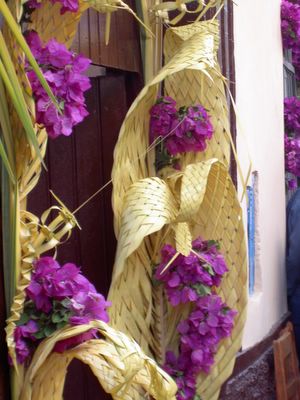

We passed what appeared to be the source of these palm creations. In a small plaza, surrounded by people excitedly awaiting the upcoming procession, were clusters of women weaving and selling palm fronds.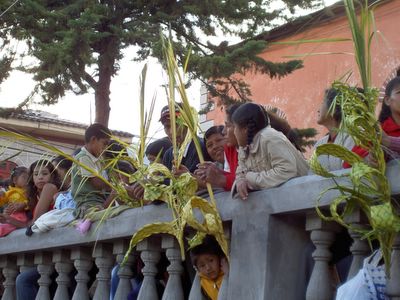
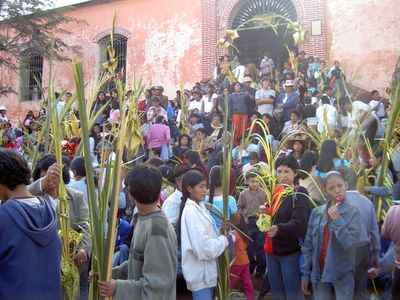
Compared to the nightly processions we have seen so far, the Palm Sunday parade was far more complex. Donkeys were herded down the street carrying large loads of retama (broom) branches with clusters of yellow flowers. The donkeys sported colorful red headwear as well as red and white flags.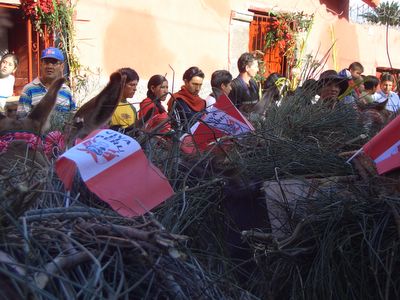
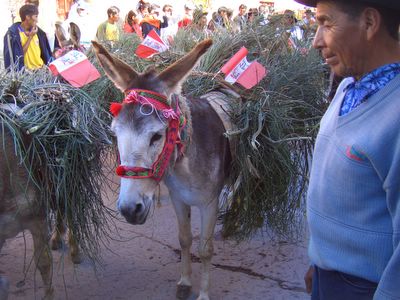
The army was also pressed into service carrying bunches or these branches.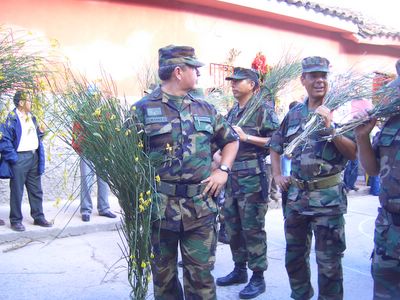
They are carried to the main plaza, to be burned over the course of Semana Santa.
At one point, scores of women paraded down the street each with their own palm frond weaving. They stopped in front of us and based on what was being said over the megaphones, all waved their palms at the same time, creating a quiet, yet powerful, swishing sound.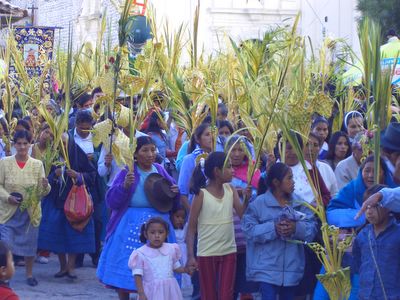
The clergy surrounded on all sides by these women, and also holding various palm creations, came beautifully arrayed in red and white. They were preceded by a police escort. Wherever we go, all facets of life from our lodging to everyday government functions to vendors telling jokes on the buses, all seem to be entwined with Catholic beliefs and practice.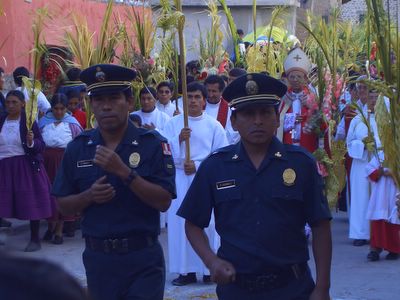
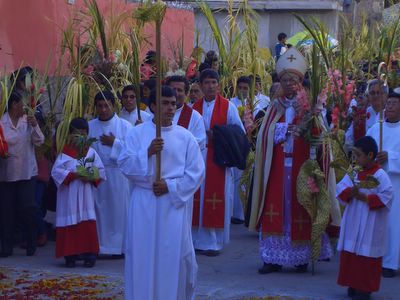
One gentleman walking in the parade played an instrument I had never seen before. It was made from animal horns pieced together to form a horn of its own.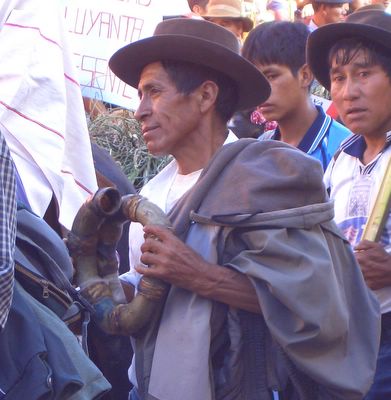
There were some bands and panpipes to be heard during the procession. Groups of llamas with bells at the end of colorful tassles hanging from their ears graced our presence. Finely adorned horses carried finely adorned women. A group of paso horses also came by trotting gracefully, their front lower legs swinging as they moved.
On our way back to the plaza after the parade had finished, we stumbled upon a group of participants and their horses relaxing after the procession.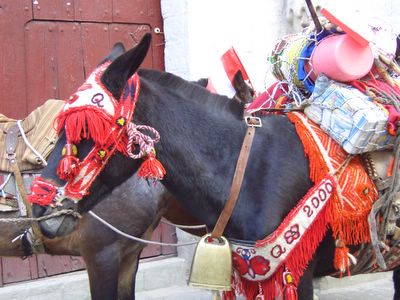
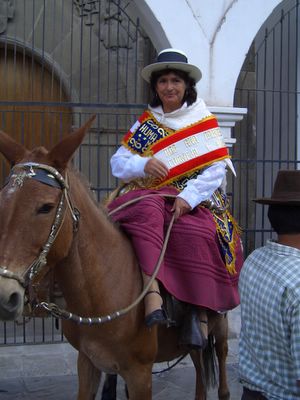
The horses were unintentionally blocking traffic as they piled into the small plaza.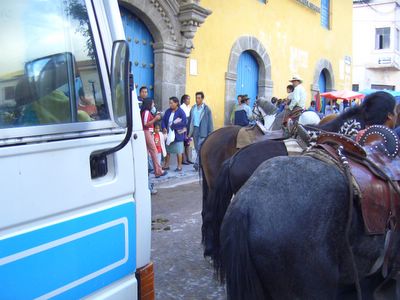
The women had kicked back and were laughing and drinking beer.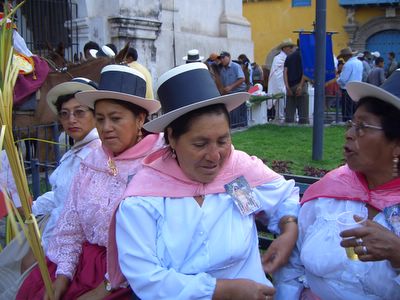
The clowns had taken off their expressive masks to reveal their expressive faces underneath.
Sweet moments to end a vibrant afternoon.

No comments:
Post a Comment